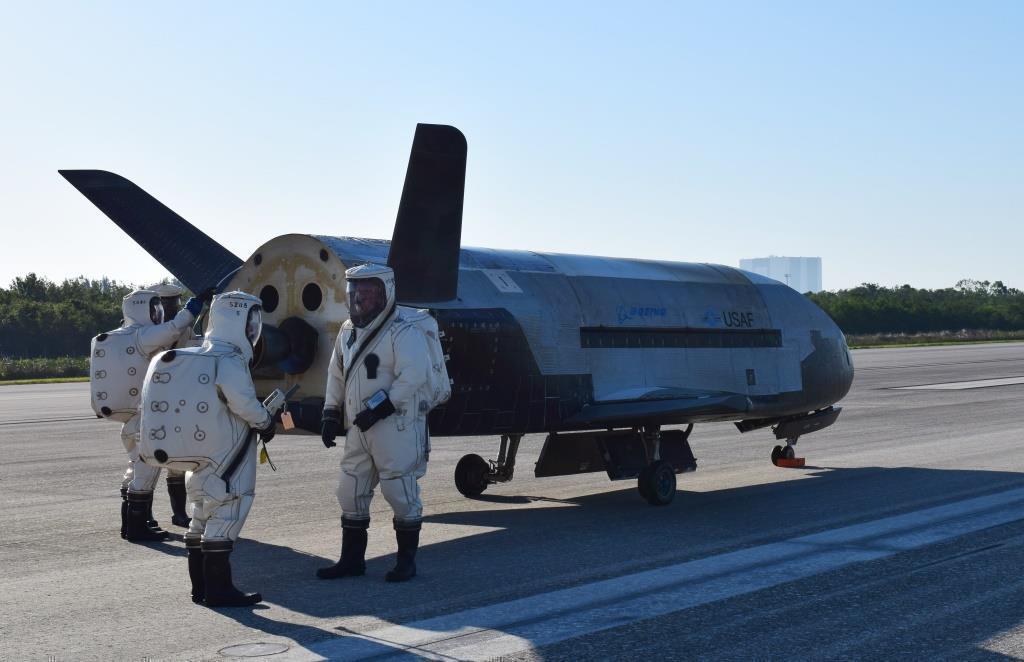The X-37B spaceplane sounds like something out of a sci-fi novel, and its mysterious past is equally evocative. What does the military put in this long-term orbital vehicle? Turns out it’s exactly the kind of neat, but not mind-blowing, science you’d expect to find in such a thing — though solar-powered masers do sound pretty cool.
Also known as the Orbital Test Vehicle, the Boeing -designed X-37B has performed five prior missions, amounting to a total of nearly eight years in orbit; The last mission alone was 780 days. But while the craft’s owners (the Air Force, though it is used by many others) are proud to tout its remarkable longevity and reliability, they rarely if ever admit what they’re sending up, or what (if anything) it brings down.
While it’s fun to think that it may be truly top secret Area 51 type stuff, it’s much more likely that it’s just run-of-the-mill classified military research. The Defense Department bankrolls an enormous amount of basic science as well as advanced technology, and some of that is bound to require testing in space. While we love and respect our Russian friends with whom we share the ISS, the Pentagon would seem to prefer they didn’t run its experiments, so they have the X-37B.
On one occasion the Air Force said that the craft tests “advanced guidance, navigation and control, thermal protection systems, avionics, high temperature structures and seals, conformal reusable insulation, lightweight electromechanical flight systems, advanced propulsion systems, advanced materials and autonomous orbital flight, reentry and landing,” which narrows it down a bit.
For the spaceplane’s sixth mission, the various departments involved have broken tradition and given details on the payloads. That’s no small feat given it’s an operation combining the resources of the Air Force, Space Force, Naval Research Lab, and NASA.
The most broadly interesting experiment has to be a solar-powered microwave laser, or maser, built by the NRL. The device “will transform solar power into radio frequency microwave energy which could then be transmitted to the ground.”
The key word there is could, since this type of wireless energy transmission has been pursued for decades. It’s doubtful that a foot-wide solar cell can produce enough energy to be beamed to the surface in measurable levels, but proving the concept piece by piece is something that has to be done in space. And for all we know they’ve already sent multiple precursor device up there on previous missions.
Don’t worry that this is some kind of orbital beam weapon that fries surface-dwellers: The total amount of energy collected by a foot-wide cell would be difficult to change into a form that’s harmful a few feet away, let alone 200 miles up through the entire atmosphere. It could, however, be used to beam power to receptive spacecraft or (conceivably) to interfere with poorly protected adversary spacecraft.
Two other experiments on board are from NASA, and they have to do with seeing how various items react to being exposed to the space environment. “One is a sample plate evaluating the reaction of select significant materials to the conditions in space. The second studies the effect of ambient space radiation on seeds,” said Air Force Secretary Barbara Barrett.
Last — that we know of — is FalconSat-8, an Air Force Academy satellite that will be performing its own, unspecified experiments once released into its own orbit by the X-37B. It is itself “an educational platform that will carry five experimental payloads for USAFA to operate
This rather large number of items being brought to space is made possible by a “service module” attached for the first time to the aft of the craft and containing some of the hardware.
It’s unknown how long this mission will be, but if it’s anything like the others, it will be on the order of months or years.














